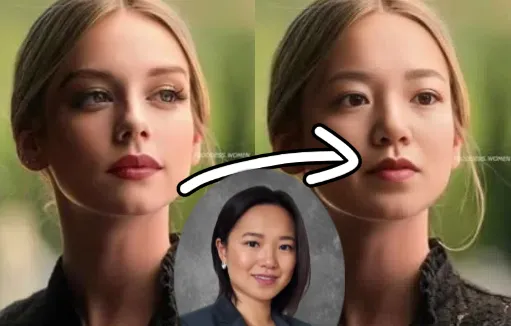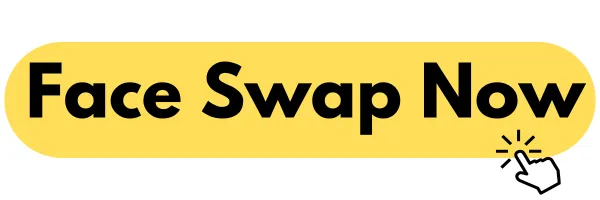Valerie Carey deepfakes
In the digital age, the phenomenon of deepfakes has emerged as a significant concern, and the case of "Valerie Carey Deepfakes" serves as a prime example of the challenges and implications associated with this advanced yet potentially harmful technology.

- Alexander Reed
- 6 min read

 Valerie Carey Deepfakes: Unraveling the Intricacies, Impacts, and Solutions
Valerie Carey Deepfakes: Unraveling the Intricacies, Impacts, and Solutions
In the digital age, the phenomenon of deepfakes has emerged as a significant concern, and the case of “Valerie Carey Deepfakes” serves as a prime example of the challenges and implications associated with this advanced yet potentially harmful technology face swap video free unlimited.
I. Understanding Deepfakes and the Valerie Carey Context
Deepfakes are synthetic media creations that utilize artificial intelligence algorithms to manipulate and fabricate content, making it appear as if a person is engaged in actions or uttering words that they never actually did or said. In the case of Valerie Carey, her likeness, voice, and other characteristics have been targeted by deepfake technology.
To create a Valerie Carey deepfake, a substantial amount of data related to her is initially gathered. This could involve scouring through her social media profiles, public appearances in videos, interviews, and any other available visual or audio recordings. The more comprehensive and diverse this dataset, the more accurately the deepfake algorithm can learn to mimic her unique features.
Once the data is amassed, advanced machine learning techniques such as generative adversarial networks (GANs) or variational autoencoders (VAEs) come into play. For instance, GANs consist of a generator and a discriminator. The generator endeavors to produce new content that closely resembles Valerie Carey, while the discriminator attempts to distinguish between the real and the fake. Through an iterative training process, the generator refines its ability to create convincing deepfakes as it receives feedback from the discriminator.
II. Motivations Behind Valerie Carey Deepfakes
Entertainment, Albeit Misguided Some individuals might be driven by what they perceive as entertainment value. They could envision creating scenarios where Valerie Carey is placed in fictional or humorous situations that deviate from her real experiences. However, this form of “entertainment” is highly questionable as it fails to consider the ethical implications and the potential harm it can inflict on Valerie Carey.
Social or Political Agendas In certain cases, deepfakes of Valerie Carey could be crafted to serve specific social or political aims. If she is associated with a particular cause or stance, false content might be generated to either bolster or undermine her position. For example, if she is an advocate for a certain policy, a deepfake video showing her expressing contrary views could be used to sway public opinion against her and her cause.
Malicious Intent and Personal Attacks Sadly, there are those with malicious motives who would target Valerie Carey. They may hold personal grudges or simply wish to cause her harm. A fabricated video or audio recording could be used to smear her reputation, making it appear as if she has engaged in inappropriate or unethical behavior, thereby affecting both her personal and professional life.
III. The Widespread Impacts of Valerie Carey Deepfakes
Reputation and Personal Life For Valerie Carey herself, the existence of deepfakes can have a catastrophic impact on her reputation. If a false video surfaces showing her making offensive remarks or engaging in unseemly behavior, it can lead to public outcry and a loss of trust from those who know her, as well as the general public. This can have far-reaching consequences for her personal relationships and her ability to pursue her professional endeavors. Even if the truth is eventually revealed, the initial damage to her reputation may be difficult to fully repair.
Social Trust and the Media Ecosystem The proliferation of Valerie Carey Deepfakes can erode social trust in the media. When people encounter such realistic-looking false content, they may become increasingly skeptical of all media they come across. This can pose a significant challenge for legitimate journalists and media outlets trying to convey accurate information, as the public may question the authenticity of everything they see or hear. Over time, this can undermine the integrity of the media ecosystem and impede the flow of reliable information.
Legal and Ethical Conundrums The creation and dissemination of Valerie Carey Deepfakes raise a host of legal and ethical issues. Legally, it is often unclear how existing laws regarding defamation, privacy, and intellectual property rights apply to deepfakes. For example, determining whether a deepfake constitutes defamation requires establishing that the false content has caused actual harm to the subject’s reputation and that the creator had malicious intent. Ethically, using someone’s likeness without their consent to create false and potentially harmful content violates the principles of respect for individuals and their rights to control their own image and reputation.
IV. Strategies to Combat Valerie Carey Deepfakes
- Technological Solutions
- Detection Tools: Researchers are actively working on developing more sophisticated deepfake detection tools. These tools analyze various aspects of the media, such as the consistency of facial expressions, the flow of movements, and the spectral characteristics of the voice. By identifying anomalies typical of deepfakes, they can flag potentially fabricated content. For example, some detection tools focus on the microexpressions on a face that are often not accurately replicated in deepfakes.
- Watermarking and Authentication: Implementing digital watermarking techniques can help identify the origin and authenticity of media content. Watermarks can be embedded in the original content related to Valerie Carey, making it easier to trace and verify if a piece of content is genuine or has been manipulated. Additionally, authentication mechanisms can be set up to require proper authorization before any content related to her is uploaded or shared.
- Legal Measures
- Updating and Enforcing Laws: The legal system needs to be updated to specifically address deepfakes. This includes clarifying the definitions of what constitutes a deepfake, how it relates to existing laws such as defamation and privacy, and what the appropriate penalties are for creating and spreading such content. Law enforcement agencies should also be equipped with the necessary training and resources to effectively investigate and prosecute cases involving deepfakes.
- International Cooperation: Given the global nature of the media landscape, international cooperation is essential in dealing with Valerie Carey Deepfakes. Different countries may have different legal approaches to deepfakes, and coordinating efforts can ensure that creators and spreaders of such content are held accountable regardless of their location.
- Social Awareness and Education
- Raising Awareness: The public needs to be made aware of the existence and dangers of deepfakes. Through media campaigns, educational programs in schools and universities, and public service announcements, people can be informed about how deepfakes are created, how to identify them, and why they are a threat to our digital ecosystem.
- Media Literacy: Teaching media literacy is crucial. People should be educated about the basics of digital media production, including how deepfakes are made, so that they can critically analyze and question the authenticity of the content they encounter. This will help them make more informed decisions when consuming digital media and avoid being easily misled by Valerie Carey Deepfakes or any other similar content.
V. Conclusion
The phenomenon of Valerie Carey Deepfakes exemplifies the complex challenges posed by deepfakes in the digital age. It not only affects the reputation and personal life of Valerie Carey but also has profound implications for social trust, the media ecosystem, and the legal and ethical frameworks. By implementing a combination of technological solutions, legal measures, and social awareness and education initiatives, we can hope to mitigate the impact of these deepfakes and safeguard the integrity of our digital media environment. As technology continues to evolve, it is essential that we remain vigilant and proactive in addressing this growing problem to ensure that individuals like Valerie Carey are protected from the malicious use of their likenesses and that the public can trust the media they consume.